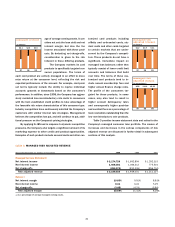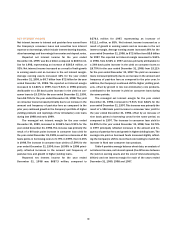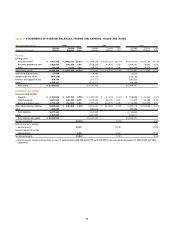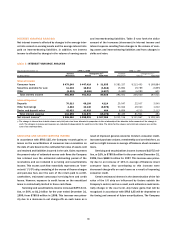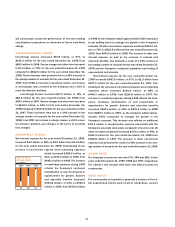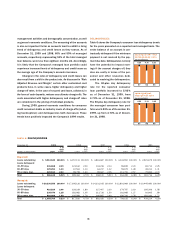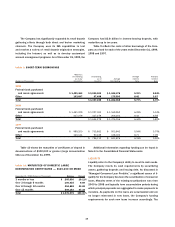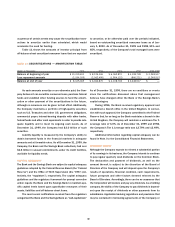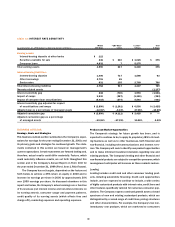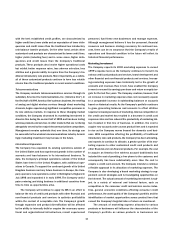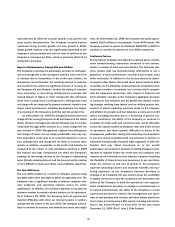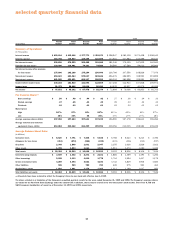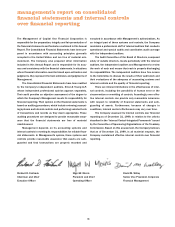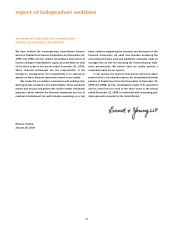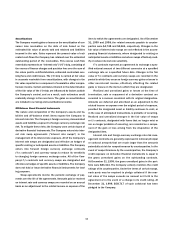Capital One 1999 Annual Report Download - page 41
Download and view the complete annual report
Please find page 41 of the 1999 Capital One annual report below. You can navigate through the pages in the report by either clicking on the pages listed below, or by using the keyword search tool below to find specific information within the annual report.
As such amounts amortize or are otherwise paid, the Com-
pany believes it can securitize consumer loans, purchase federal
funds and establish other funding sources to fund the amorti-
zation or other payment of the securitizations in the future,
although no assurance can be given to that effect. Additionally,
the Company maintains a portfolio of high-quality securities
such as U.S. Treasuries and other U.S. government obligations,
commercial paper, interest-bearing deposits with other banks,
federal funds and other cash equivalents in order to provide ade-
quate liquidity and to meet its ongoing cash needs. As of
December 31, 1999, the Company had $2.0 billion of such
securities.
Liability liquidity is measured by the Company’s ability to
obtain borrowed funds in the financial markets in adequate
amounts and at favorable rates. As of December 31, 1999, the
Company, the Bank and the Savings Bank collectively had over
$1.6 billion in unused commitments, under its credit facilities,
available for liquidity needs.
CAPITAL ADEQUACY
The Bank and the Savings Bank are subject to capital adequacy
guidelines adopted by the Federal Reserve Board (the “Federal
Reserve”) and the Office of Thrift Supervision (the “OTS”) (col-
lectively, the “regulators”), respectively. The capital adequacy
guidelines and the regulatory framework for prompt corrective
action require the Bank and the Savings Bank to maintain spe-
cific capital levels based upon quantitative measures of their
assets, liabilities and off-balance sheet items.
The most recent notifications received from the regulators
categorized the Bank and the Savings Bank as “well-capitalized.”
As of December 31, 1999, there are no conditions or events
since the notifications discussed above that management
believes have changed either the Bank or the Savings Bank’s
capital category.
During 1996, the Bank received regulatory approval and
established a branch office in the United Kingdom. In connec-
tion with such approval, the Company committed to the Federal
Reserve that, for so long as the Bank maintains a branch in the
United Kingdom, the Company will maintain a minimum Tier 1
Leverage ratio of 3.0%. As of December 31, 1999 and 1998,
the Company’s Tier 1 Leverage ratio was 12.79% and 13.49%,
respectively.
Additional information regarding capital adequacy can be
found in Note J to the Consolidated Financial Statements.
DIVIDEND POLICY
Although the Company expects to reinvest a substantial portion
of its earnings in its business, the Company intends to continue
to pay regular quarterly cash dividends on the Common Stock.
The declaration and payment of dividends, as well as the
amount thereof, is subject to the discretion of the Board of
Directors of the Company and will depend upon the Company’s
results of operations, financial condition, cash requirements,
future prospects and other factors deemed relevant by the
Board of Directors. Accordingly, there can be no assurance that
the Corporation will declare and pay any dividends. As a holding
company, the ability of the Company to pay dividends is depend-
ent upon the receipt of dividends or other payments from its
subsidiaries. Applicable banking regulations and provisions that
may be contained in borrowing agreements of the Company or
40
occurrence of certain events may cause the securitization trans-
actions to amortize earlier than scheduled, which would
accelerate the need for funding.
Table 11 shows the amounts of investor principal from
off-balance sheet securitized consumer loans that are expected
to amortize, or be otherwise paid over the periods indicated,
based on outstanding securitized consumer loans as of Jan-
uary 1, 2000. As of December 31, 1999 and 1998, 51% and
65%, respectively, of the Company’s total managed loans were
securitized.
table 11: SECURITIZATIONS — AMORTIZATION TABLE
(Dollars in Thousands) 2000 2001 2002 2003 2004–2008
Balance at beginning of year $ 10,319,400 $ 8,125,365 $ 6,062,870 $ 4,108,738 $ 3,248,517
Less repayment amounts (2,194,035) (2,062,495) (1,954,132) (860,221) (3,248,517)
Balance at end of year $ 8,125,365 $ 6,062,870 $ 4,108,738 $ 3,248,517 $ —



